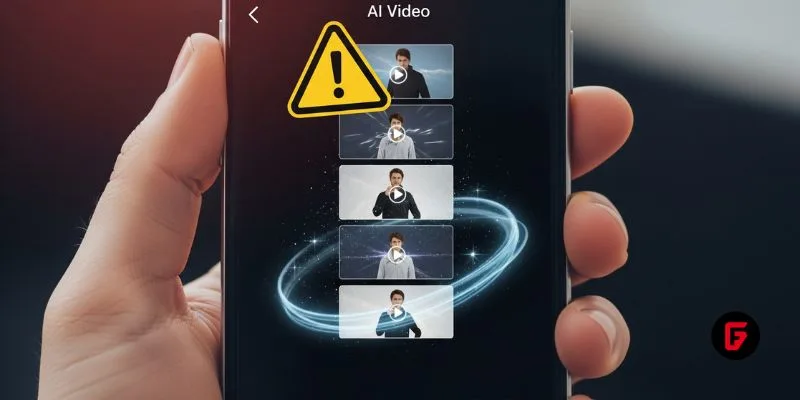By futureTEKnow | Editorial Team
Virtual reality (VR) technology has significantly evolved over the last few decades, particularly in the realm of surgical training. The journey began in the 1990s when VR-based simulators were first introduced for various procedures, such as cholecystectomy and wound suturing. These early applications laid the groundwork for more sophisticated systems that emerged in the 2000s, driven by advancements in computer processing and graphics technology.
By integrating VR into surgical education, medical schools have begun to move away from traditional methods, which often relied on live patient interactions and cadaver training. Today, VR not only allows trainees to practice surgical techniques in a safe environment but also enhances their understanding of complex anatomical structures and improves overall surgical performance. As a result, VR has become a vital tool in modern medical education, promising to reshape how future surgeons are trained and prepared for the operating room.
Traditional surgical training methods, like practicing on cadavers or observing live surgeries, come with significant challenges. Cadavers, while valuable, lack the realism of live tissue, such as bleeding and organ responsiveness, making it harder for students to fully grasp dynamic surgical scenarios.
Observing live surgeries often limits hands-on experience, leaving students to learn by watching rather than doing. Additionally, the pressure of working on real patients can lead to stress and hesitation, which may hinder learning. These limitations not only slow skill development but also create gaps in confidence and preparedness when transitioning into real-world surgical environments.
Virtual reality (VR) is transforming how medical students learn surgery by offering a hands-on, risk-free environment to practice complex procedures. Unlike traditional methods that rely heavily on cadavers or limited opportunities in operating rooms, VR allows students to repeat surgeries as many times as needed until they master the techniques.
This repetition builds confidence and muscle memory without endangering patients. VR simulations also provide instant feedback, helping students identify mistakes and improve in real time. Studies show that VR-trained students perform better in live surgeries, making it a powerful tool to bridge the gap between theory and practice. With its ability to simulate rare or high-risk procedures, VR ensures that future surgeons are better prepared for real-world challenges.
Integrating Virtual Reality (VR) into medical school curricula can revolutionize how future surgeons are trained. To start, schools should identify key surgical skills that can benefit from VR simulations, such as suturing, laparoscopic techniques, and emergency procedures.
Collaborating with VR developers can help create tailored modules that align with existing course objectives. Additionally, faculty training is crucial; instructors need to be comfortable using VR technology and understand how to incorporate it into their teaching methods.
By blending traditional learning with immersive VR experiences, medical schools can provide students with hands-on practice in a safe environment, ultimately enhancing their confidence and competence before they enter the operating room.
To successfully implement VR surgical training programs in medical schools, it’s essential to have the right technology in place. First, you’ll need high-quality VR headsets, such as the Oculus Quest or HTC Vive, which provide immersive experiences for students.
Additionally, powerful computers with advanced graphics capabilities are crucial to run the simulation software smoothly. Many programs also require motion tracking sensors to capture the user’s movements accurately, enhancing the realism of the training. Finally, consider investing in user-friendly software platforms designed specifically for surgical training, which offer a variety of scenarios and real-time feedback.
By ensuring you have these key components, medical schools can create an effective and engaging VR training environment that prepares students for real-world surgical challenges.
Creating realistic scenarios in VR surgical training is essential for effective learning. By simulating real-life surgical procedures, students can practice their skills in a controlled environment that closely mirrors the operating room. These immersive experiences allow learners to encounter various surgical challenges, from routine operations to complex emergencies, without the risk of harming patients.
High-quality 3D models and detailed anatomical representations enhance the realism, making it easier for students to understand spatial relationships and surgical techniques. This hands-on approach not only boosts confidence but also prepares future surgeons for the unpredictability of actual surgeries, ultimately leading to better patient outcomes.
Incorporating effective feedback mechanisms into VR surgical training programs is essential for maximizing student learning and skill development. Real-time performance evaluations allow students to receive immediate insights into their techniques, helping them identify areas for improvement right away.
For instance, VR simulations can track metrics such as precision, speed, and decision-making under pressure, providing detailed reports after each session. This data-driven approach not only enhances the learning experience but also fosters a growth mindset, encouraging students to refine their skills continuously.
By integrating constructive feedback into the training process, medical schools can ensure that future surgeons are well-prepared for the challenges of real-life surgeries.
One of the biggest challenges in implementing VR surgical training programs is ensuring access to reliable and high-quality technology. Many medical schools may struggle with the upfront costs of VR headsets, powerful computers, and specialized software required to run realistic simulations.
Also, maintaining this equipment and keeping it updated with the latest advancements can be both time-consuming and expensive. Another hurdle is ensuring that the technology is user-friendly for both students and instructors, as overly complex systems can create frustration and limit adoption.
Schools must consider infrastructure needs, such as dedicated spaces for VR labs with adequate power supply, internet connectivity, and ventilation to support extended training sessions. Addressing these barriers early on is crucial for a smooth integration of VR into medical education programs.
To successfully implement VR surgical training programs, medical schools must prioritize faculty training. Instructors need hands-on experience with the VR tools and software to confidently guide students through simulations. Start by organizing workshops where faculty can explore the technology, practice using it, and understand how to integrate it into their teaching.
Partnering with VR developers for on-site demonstrations or offering online tutorials can also help bridge the learning curve. Additionally, creating a support system—such as a dedicated tech team—ensures faculty have access to troubleshooting and ongoing assistance. When instructors feel empowered and comfortable with the technology, they can focus on what matters most: teaching students how to become skilled surgeons.
Implementing VR surgical training programs in medical schools comes with significant initial costs, including the purchase of high-quality VR headsets, software licenses, and the necessary hardware to support these technologies. However, when you consider the long-term benefits, such as reduced training time and improved student performance, the investment can pay off.
For example, VR training can decrease the number of mistakes made during real surgeries, potentially lowering malpractice insurance costs and enhancing patient safety. Additionally, many institutions find that grants and partnerships with tech companies can help offset expenses. By viewing VR as a valuable educational tool rather than just a cost, medical schools can better prepare their students for the challenges of modern surgical practice while ensuring a more effective use of resources.
Implementing VR surgical training programs in medical schools represents a transformative opportunity to enhance the education of future surgeons. By offering a safe and immersive environment for practice, VR not only boosts student confidence but also improves skill retention and performance. As technology continues to advance, medical schools that embrace VR will be better equipped to prepare their students for the complexities of real-world surgery.
The time is now for educators and institutions to invest in this innovative approach, ensuring that the next generation of healthcare professionals is trained with the best tools available.
Founded in 2018, futureTEKnow is a global database dedicated to capturing the world’s most innovative companies utilizing emerging technologies across five key sectors: Artificial Intelligence (AI), immersive technologies (MR, AR, VR), blockchain, robotics, and the space industry. Initially launched as a social media platform to share technology news, futureTEKnow quickly evolved into a comprehensive resource hub, spotlighting the latest advancements and groundbreaking startups shaping the future of tech.

SpaceX aims to nearly double launches from Vandenberg in 2025, facing support from federal agencies but strong objections from the state and local communities.

Traditional Medicare will pilot AI-assisted prior authorization in 2026 across six states, focusing on high-risk outpatient services. Clinicians retain final say, but incentives and access concerns loom as CMS tests fraud reduction and “gold card” exemptions. Here’s what providers and patients should know.

OpenArt’s new “one-click story” compresses scripting, visuals, and edits into ready-to-post short videos—fueling viral growth and a fresh IP debate. We break down how it works, adoption signals, what’s next (multi-character, mobile), and practical guardrails creators and brands should follow to stay original and compliant.

OpenAI’s o3 swept the Kaggle AI chess tournament, defeating xAI’s Grok 4–0. The victory fueled the intense rivalry between Altman and Musk, reshaping AI benchmarks.

NASA and Google’s AI-powered Crew Medical Officer Digital Assistant enables autonomous diagnoses for astronauts on Mars missions, redefining remote healthcare for space and Earth.

Pinterest’s CEO confirms that fully agentic AI shopping is years away, as the platform invests in AI-powered tools to enhance discovery, inspiration, and personalized shopping experiences for millions.

Shopify’s new AI shopping tools are transforming e-commerce, letting agents and chatbots deliver smooth, personalized shopping and checkout experiences across platforms. Learn how these innovations reshape online retail.

Meta has acquired WaveForms AI, a startup pioneering emotion-detecting voice technology. Learn what this means for Meta’s AI voice ambitions and the future of AI audio.

Tracelight is revolutionizing financial modelling for finance professionals with AI-powered Excel tools that automate complex tasks, reduce errors, and unlock new analysis capabilities. Learn how this next-gen solution changes the future of spreadsheets.

China’s Lanyue lander completed its first major test, showcasing advanced engineering for safe, crewed moon landings before 2030. Explore how this milestone shapes the space race.

Microsoft rolls out GPT-5 across its Copilot suite, integrating smarter AI for enterprise and personal users. Discover new features, free access, and what sets this launch apart.

OpenAI’s GPT-5 is now live for all ChatGPT users. It brings faster, smarter AI with improved reasoning, expanded context, and safer outputs—marking a major leap in generative technology.
To provide the best experiences, we use technologies like cookies to store and/or access device information. Consenting to these technologies will allow us to process data such as browsing behavior or unique IDs on this site. Thanks for visiting futureTEKnow.